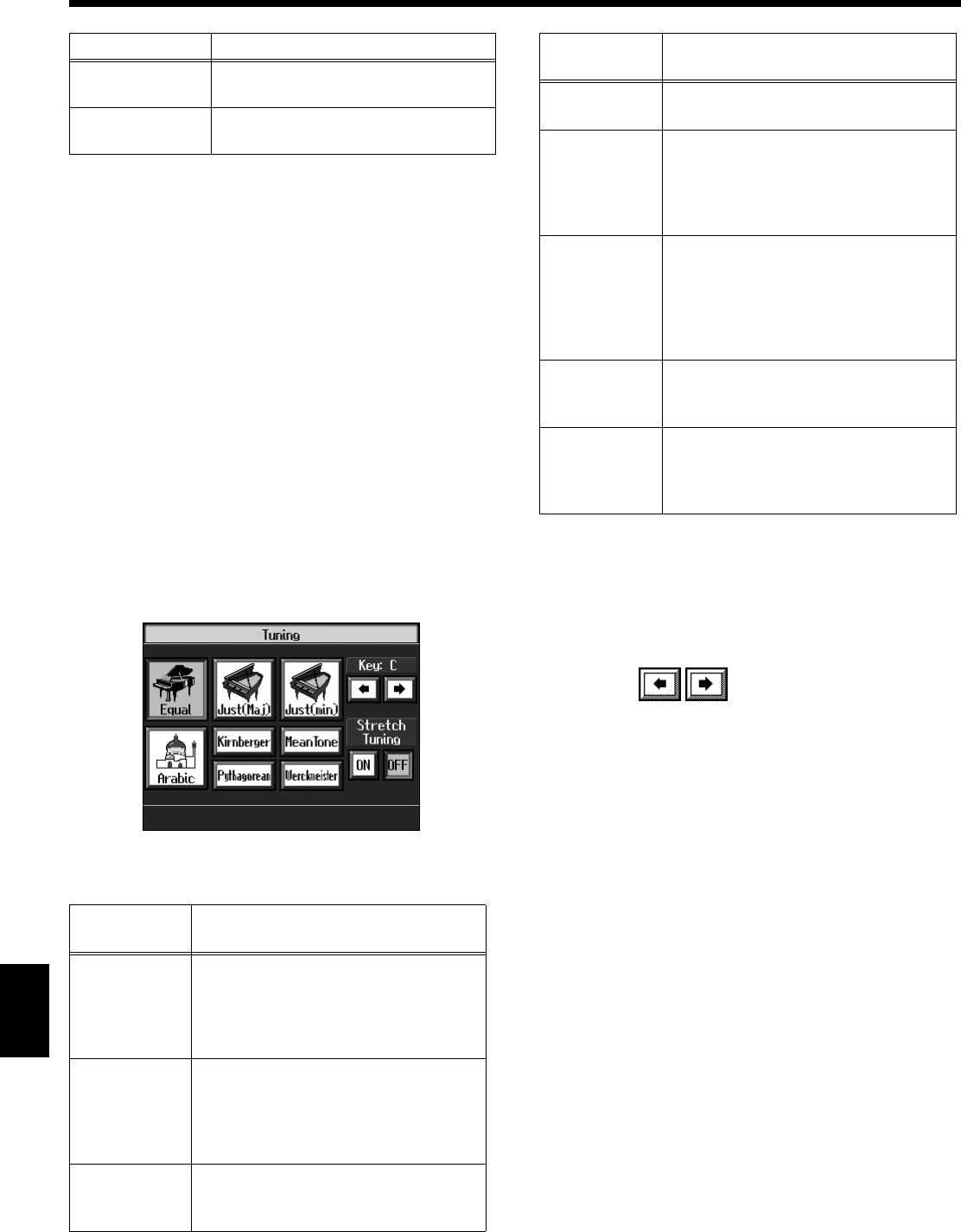
166
Chapter 10 Various Settings
Chapter 10
3.
Touch the name of the parameter you want to set.
Refer to the corresponding page for each function.
4.
Press the [Exit] button to return to the Functions screen.
■
Changing the Tuning (Tuning)
❍
Choosing the Tuning
You can play classical styles such as Baroque using historic
temperaments (tuning methods).
Most modern songs are composed for and played in equal
temperament, the most common tuning in use today. But at
one time, there were a wide variety of other tuning systems
in existence. By playing in the temperament that was in use
when a composition was created, you can experience the
sonorities of chords originally intended for that song.
At Step 3 in “Procedure” (p. 165), touch <Tuning>.
fig.d-p-temp.eps_50
You can choose from among the eight tunings described
below.
Touch any one of the icons to choose the tuning system.
When playing in a temperament other than equal
temperament, you must specify the tonic (the note
corresponding to C for a major key, or to A for a minor key)
of the key in which you will play.
Touch <Key> to select the tonic.
If you have selected equal temperament, it is not necessary to
select the tonic.
❍
Setting the Tuning Curve (Stretch Tuning)
Pianos are generally tuned so that the low range is flatter and
the high range is sharper than equal tempered pitches. This
method of tuning is unique to the piano, and is known as
“stretched tuning.”
A graph that shows the changes in pitch of actual tuning
compared with the changes in equal temperament pitch is
called a tuning curve. Changing the tuning curve produces
subtle variations in the reverberations of the chords you play.
Touch the Stretch Tuning <ON> or <OFF> icon to select the
tuning curve.
When set to “ON,” the tuning curve features extended low
and high ranges (Stretch Tuning). It is suitable for piano
solos. This setting is selected when the power is turned on.
When set to “OFF,” the standard tuning curve is used. It is
suitable when playing in an ensemble with other
instruments.
Touch Screen
Allows for calibration of the touch
screen (p. 175).
Ir/Serial Port
Sets the remote sensor’s on or off
(p. 174)
Tuning
system
Characteristics
Equal
This temperament divides the octave
into 12 equal parts. All intervals will be
slightly out of tune by the same amount.
This setting is in effect when you turn on
the power.
Just (Maj)
This temperament makes the 5th and
3rd intervals pure. It is unsuited to
playing melodies and cannot be
transposed, but is capable of beautiful
sonorities.
Just (min)
Just intonation differs between major
and minor keys. The same results as
major can be obtained in a minor key.
Parameter
Explanation
Arabic
This tuning is suitable for the music of
Arabia.
Kirnberger
This temperament is a modification of
meantone temperament and just
intonation, allowing more freedom of
modulation. Performances are possible
in all keys (III).
Pythagorean
This temperament is based on the
theories of the Greek philosopher
Pythagoras, and has pure fourths and
fifths. Chords containing a third will
sound impure, but melodies will sound
good.
Meantone
This temperament is a partial
compromise of just intonation in order
to allow modulation.
Werkmeister
This temperament is a combination of
meantone and Pythagorean
temperaments. It allows you to play in
all keys. (First method, number three.)
Tuning
system
Characteristics
KR117_115_r_e.book 166 ページ 2006年2月27日 月曜日 午前11時55分


















